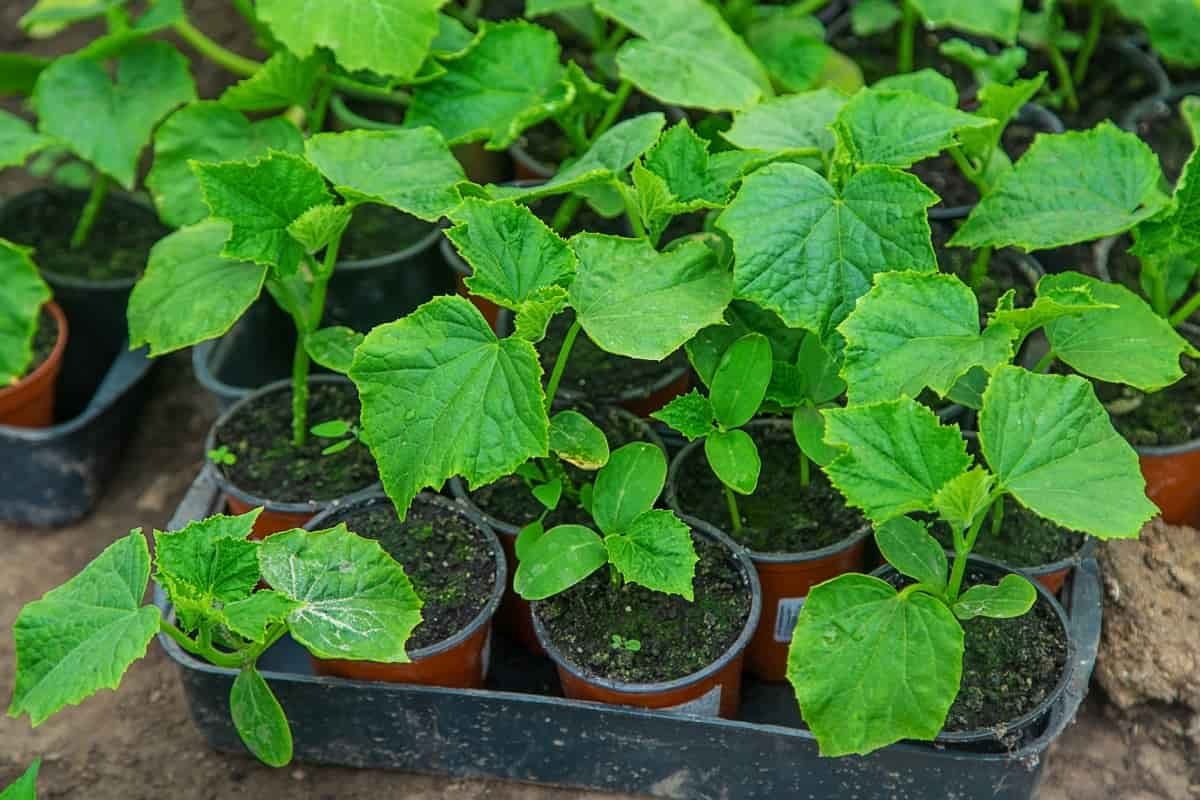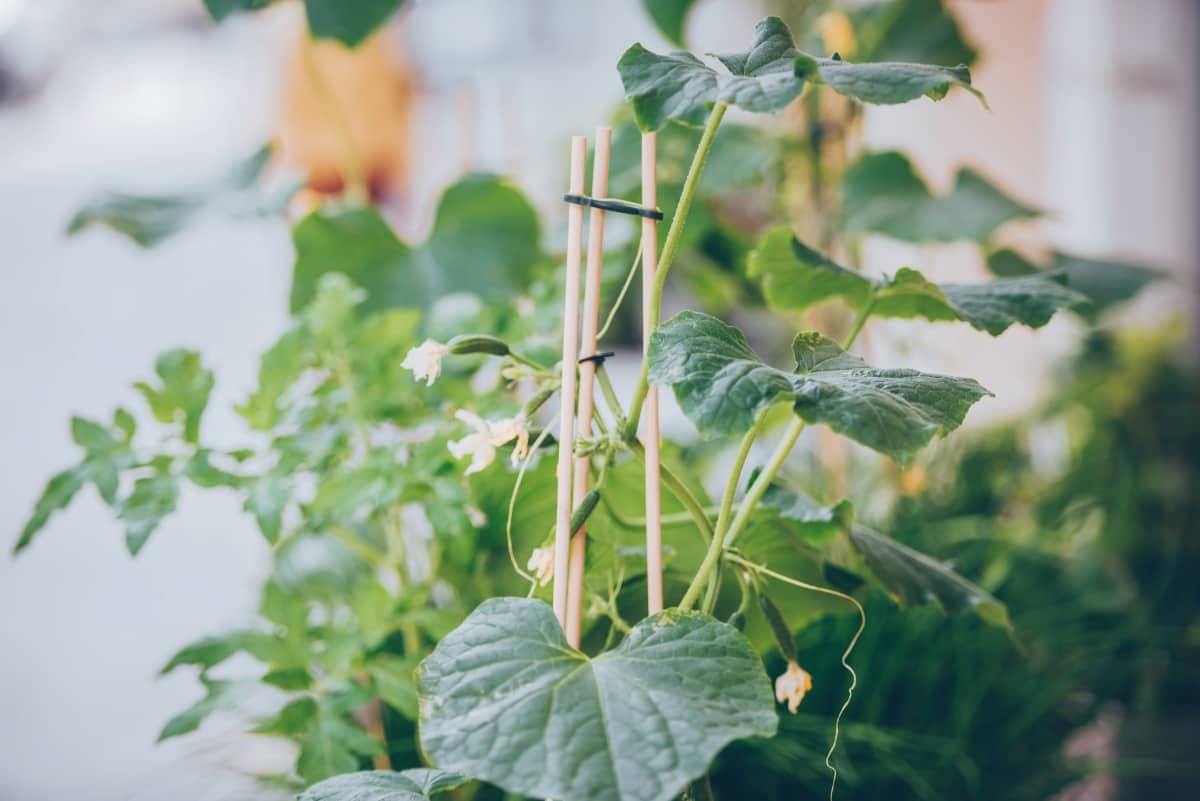Cucumbers are one of the popular vegetables to grow in pots, and providing them with the right fertilizer is essential for healthy growth and abundant harvests. This article will give an idea about the best fertilizer options for pot cucumbers, focusing on organic and natural methods. We will also explore homemade fertilizer recipes, the importance of NPK ratio, and when and how to apply fertilizer to your cucumber plants.

Best Fertilizer for Cucumbers in Pots
Understanding the Nutritional Needs of Cucumbers in Pots
Cucumbers are heavy feeders, requiring a balanced diet to thrive. When growing cucumbers in pots, it’s essential to provide them with adequate nutrients. A well-draining potting mix enriched with organic matter is recommended. Cucumbers require higher amounts of phosphorus, potassium, and essential micronutrients like calcium and magnesium.
Fertilizers specifically formulated for vegetables can be used to supplement the nutrient requirements. Regular monitoring of soil pH and nutrient levels is essential to ensure optimal growth. Additionally, consistent watering and proper sunlight exposure contribute to potted cucumber plants’ overall health and productivity.
Organic Fertilizers for Cucumbers in Pots: Nurturing Your Plants Naturally
These fertilizers, derived from plant or animal sources, enrich the soil with essential nutrients, promoting healthy growth and productivity. Compost, well-rotted manure, and seaweed extracts are popular organic options. These fertilizers improve soil structure, increase water retention, and enhance microbial activity, creating a favorable environment for cucumber plants. Using organic fertilizers, you can grow cucumbers in pots while minimizing synthetic chemicals, ensuring a healthier and more environmentally friendly approach to gardening.
Natural Fertilizers for Cucumbers in Pots: For Environmentally-Friendly Options
Natural fertilizers are an environmentally friendly option for growing cucumbers in pots. One option is compost, made from organic matter like used coffee grounds, fruit and vegetable scraps, and yard waste. Another option is worm castings, which are rich in nutrients and help improve soil structure. Additionally, seaweed extract can be used as a natural fertilizer, providing essential minerals and promoting healthy growth. These natural fertilizers are safe for the environment and can help produce healthy pot cucumbers.
Homemade Fertilizers for Cucumbers in Pots: DIY Solutions for Optimal Plant Health
Homemade fertilizers are a great way to provide optimal plant health for cucumbers grown in pots. Several DIY solutions can be easily made at home. One option is to use compost, which is rich in nutrients and can be added to the soil. Another option is to create a liquid fertilizer for Cucumbers using ingredients like banana peels, coffee grounds, and eggshells.
In case you missed it: 10 Best Heirloom Cucumber Varieties to Grow in Your Garden

These ingredients can be blended with water and then applied to the plants. Lastly, a mixture of Epsom salt and water can also be used as a homemade fertilizer for cucumbers. These DIY solutions can help promote healthy growth and abundant harvests.
Cucumbers Fertilizer NPK Ratios and Their Importance in Selecting Fertilizers for Cucumbers in Pots
NPK stands for nitrogen, phosphorus, and potassium, essential nutrients for plant growth. Cucumbers have a low nitrogen demand. However, they do take a lot of potassium and phosphorus. This implies that the first of the three digits on a commercial fertilizer container should be lower, such as 5-10-10.
Alternatively, rather than 20-20-20, the absolute numbers should be low, such as 4-4-4. Understanding what kind of soil you have can help you figure out how much and what kind of nutrients your cucumbers require. Sandy soils quickly lose important nutrients and become nutrient-deficient. Nutrients can be locked up in heavy soils. Most garden soil can be improved by adding compost before planting. Light sandy soils benefit from organic matter, while heavy clay soils benefit from lightning.
Slow-Release Fertilizers: Enhancing Nutrient Availability for Cucumbers in Pots
These fertilizers are designed to release nutrients gradually over an extended period, ensuring a steady supply of essential elements for plant growth. Slow-release fertilizers help prevent nutrient deficiencies and promote healthier cucumber plants by controlling nutrient release. Additionally, they reduce the risk of nutrient leaching, which can occur with traditional fertilizers. Overall, slow-release fertilizers are an effective and convenient option for maintaining optimal nutrient levels in potted cucumber plants, resulting in improved growth and yield.
pH Levels and Fertilizer Selection for Cucumbers in Pots: For Balanced Soil Environment
Cucumbers grow well in slightly acidic soil with a pH range of 6 to 6.8. Regular monitoring of pH levels is essential to ensure optimal growth and nutrient absorption. To adjust pH levels, the appropriate fertilizer selection is necessary. Acidic fertilizers, such as ammonium sulfate or urea, can help lower pH levels, while lime or dolomite can raise pH levels. It is important to choose the right fertilizer to maintain a balanced soil environment and promote healthy cucumber growth in pots.
The Importance of Timing: When to Apply Fertilizer to Cucumbers in Pots
Ideally, fertilizers should be applied when the plants are actively growing, around two weeks after transplanting. This allows the roots to establish themselves before receiving a nutrient boost. Also, avoid applying fertilizer during extreme heat and drought, which can cause plant stress. Consistent and timely fertilizer application ensures that the cucumbers receive the necessary nutrients for healthy growth and abundant fruit production.
In case you missed it: How to Grow Cucumbers from Seeds in Pots/containers: Planting and Care

How to Apply Fertilizer to Cucumbers in Pots: Techniques for Maximum Effectiveness
Firstly, choose a balanced fertilizer specifically formulated for vegetables. Use a granular or liquid fertilizer, following the instructions on the packaging for proper dilution or application rates. Apply the fertilizer evenly around the cucumber plant’s base, avoiding direct contact with the leaves or stems.
After applying the fertilizer, water the plant thoroughly to ensure proper absorption. Repeat the fertilization process every two to three weeks during the growing season. Regularly monitor the cucumber plants for any signs of nutrient deficiency or excessive fertilization, adjusting the application accordingly.
Water-Soluble Fertilizers to Boost Nutrient Uptake for Healthy Cucumber Plants in Pots
These fertilizers are designed to dissolve easily in water, making them readily available for plant absorption. Water-soluble fertilizers ensure that cucumber plants can efficiently uptake the necessary elements for growth and development by providing essential nutrients in a soluble form. The nutrients in these fertilizers can be quickly absorbed through the roots, resulting in healthier and more productive cucumber plants.
Additionally, water-soluble fertilizers allow for precise control over nutrient levels, enabling gardeners to tailor the feeding regimen to the specific needs of their cucumber plants. Overall, incorporating water-soluble fertilizers into the care routine of potted cucumber plants is an excellent way to promote optimal growth and yield.
Best Fertilizer Application Techniques for Cucumbers in Pots: Dos and Don’ts
- First, choose a balanced fertilizer with equal nitrogen, phosphorus, and potassium. This provides the vital nutrients for healthy growth.
- Secondly, follow the recommended application rate provided on the fertilizer packaging. Over-fertilizing can lead to nutrient burn and plant damage.
- Additionally, water the plants thoroughly after applying fertilizer to help them penetrate the soil.
- On the other hand, please don’t use excessive fertilizer as it can cause nutrient imbalances and negatively impact plant health.
- Lastly, don’t apply fertilizer too close to the plant stems, as it may burn the roots. Following these guidelines can achieve optimal growth and a bountiful cucumber harvest.
In case you missed it: When to Transplant Cucumber Seedlings: 9 Things to Check Before Your Start Growing

Conclusion
Choosing the best fertilizer for cucumbers in pots involves considering organic, natural, and homemade options. Understanding the NPK ratio and applying the fertilizer at the right time and in the right way will help ensure healthy and productive cucumber plants. Experiment with different fertilizers to find the best fit for your growing conditions and enjoy a bountiful cucumber harvest.
- Feed Your Flock for Less: Top 10 Tips to Save on Chicken Feed
- Ultimate Guide to Ossabaw Island Hog: Breeding, Raising, Diet, and Care
- Hatching Answers: The Top 10 Reasons Your Chickens Aren’t Laying Eggs
- Eggs and Economics: Breaking Down the Cost of Raising Backyard Chickens
- Defend Your Greens: Proven Methods to Keep Iguanas Out of Your Garden
- Ultimate Guide to Cinnamon Queen Chicken: A Comprehensive Guide for Beginners
- Ultimate Guide to California Tan Chicken: Breeding, Raising, Diet, Egg-Production and Care
- Ultimate Guide to Marsh Daisy Chicken: Breeding, Raising, Diet, and Care
- 10 Types of Chicken Farming Businesses You Can Start for Profits